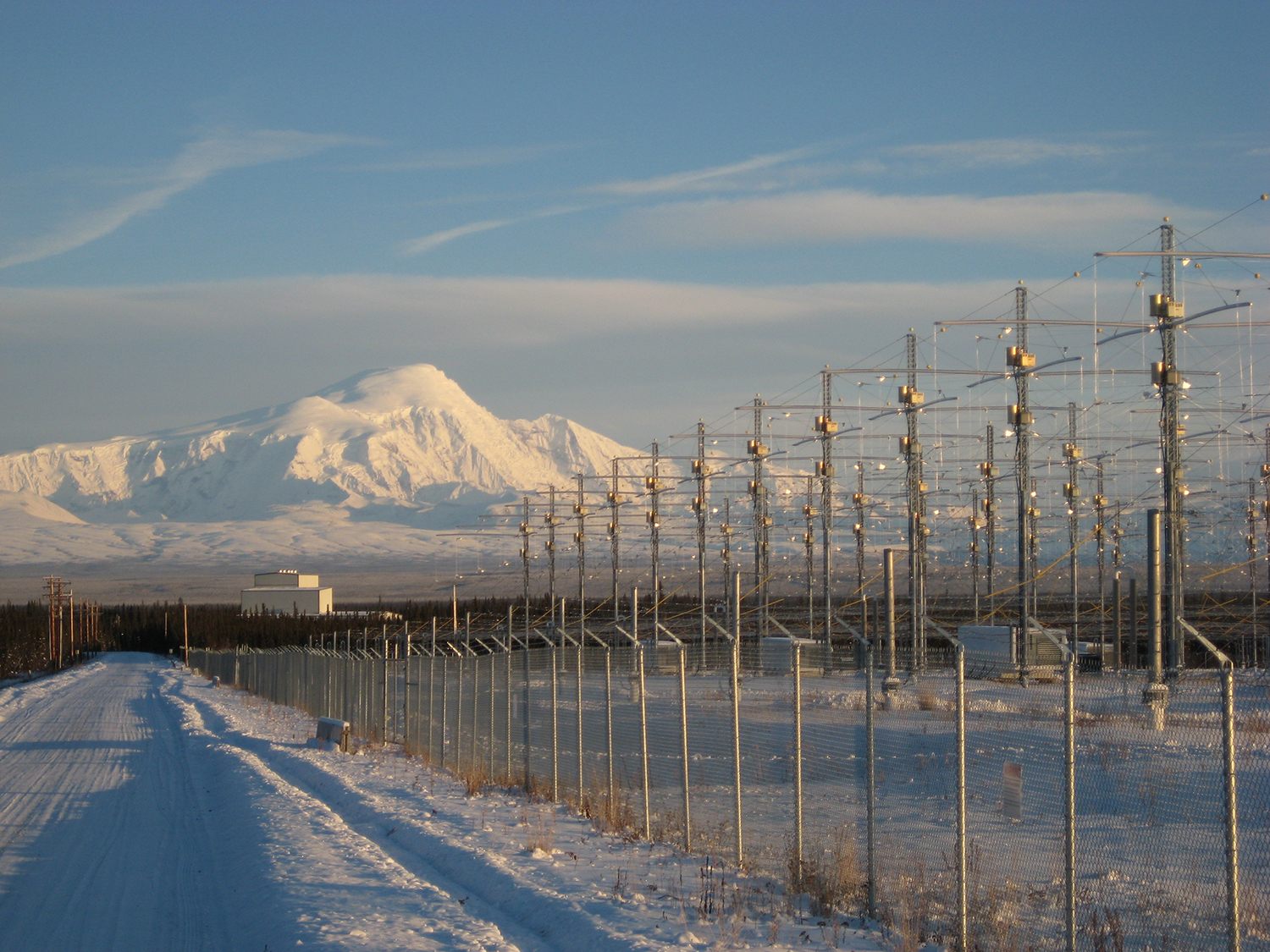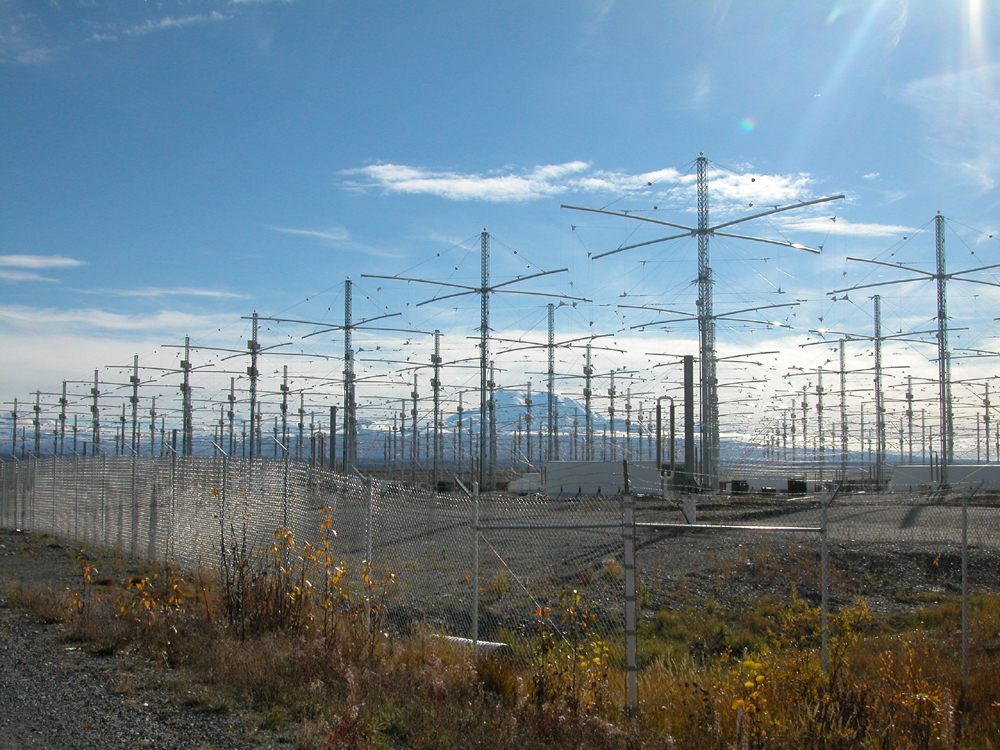How Alaska’s Creepiest Research Station Got Its Reputation
It all started with caribou walking backward.

The HAARP research facility, near Gakona, Alaska. (Photo: Christopher Fallen)
In Glenallen, Alaska, locals began to witness a worrisome phenomenon: caribou walking backward. They blamed HAARP: the High Frequency Auroral Research Project.
Never mind that it was only 1996, and the HAARP research station, located in the woods outside nearby Gakona, wasn’t even fully operational yet. Even in its infancy, the project was already the subject of feverish speculation.
Born in the early 1990s, HAARP conducted its research by firing beams of directed radio waves into subspace, in order to super-heat the Earth’s ionosphere. By measuring the results, scientists were then able to study the possible effects of stronger solar waves on the ionosphere, as well as the ionosphere’s natural effects on communications signals
The stated goals of these investigations were relatively mundane–mostly, scientists said they hoped to improve the performance of things like GPS, submarine communication, and the military’s ability to map both terrestrial and underground surfaces.
But from the beginning, scientists like Bernard Eastlund believed that the HAARP facility could also be used as an advanced weapon of war. (“The government will say it isn’t so, but if it quacks like a duck and it looks like a duck, there’s a good chance it is duck,” Eastlund said.)

There was speculation that HAARP had the ability to modify weather patterns. (Photo: Malcolm Manners/CC BY 2.0)
As time went on, this speculation became more and more baroque. It was said that HAARP was being used for mind control, that it was a high-tech death ray, and that it could even be used to manipulate time. Most commonly, it was suggested that HAARP could be used to alter weather patterns, with specific targets.
Over the years, those who believed these conspiracies blamed HAARP for sundry events, including the strange disappearance of Malaysian Airlines flight MH370, the Columbia Space Shuttle disaster, and the polar vortex. Ethan A. Huff, a writer for NaturalNews.com, presented the theory that “atmospheric anomalies” over Japan indicated HAARP was behind the devastating tsunami and earthquake of 2011.
Of course officials denied it all. “There’s absolutely nothing we can do to disturb the Earth’s [weather] systems,” Umran Inan, a Stanford scientist who worked closely with HAARP, told Popular Science in 2008. “Even though the power HAARP radiates is very large, it’s minuscule compared with the power of a lightning flash—and there are 50 to 100 lightning flashes every second. HAARP’s intensity is very small.”

The antenna array at HAARP. (Photo: US Government/Public Domain)
Others, though, seemed to fuel speculation even in their efforts to debunk conspiracies. “We are not doing anything except good science and pure research,” an anonymous Air Force official told the Earth Island Journal in the fall of 1994. “When covert operations occur, the science team, the operating funds and the mission will be black.”
As of 2015, HAARP is officially no more–kind of. David Walker, deputy assistant secretary of the Air Force, reportedly told Congress, “We’re moving on to other ways of managing the ionosphere, which the HAARP was really designed to do. To inject energy into the ionosphere to be able to actually control it. But that work has been completed.”
And so, having supposedly outlived its purpose, the U.S. military handed the keys to the $300 million HAARP facility to the University of Alaska, Fairbanks. They plan to fund its operation by renting it out to independent researchers.
That should put the conspiracy theories to rest. Maybe.
These articles are brought to you by Netflix's Stranger Things. All Episodes Now Streaming.







Follow us on Twitter to get the latest on the world's hidden wonders.
Like us on Facebook to get the latest on the world's hidden wonders.
Follow us on Twitter Like us on Facebook